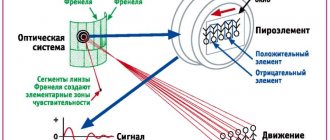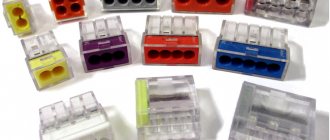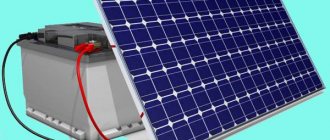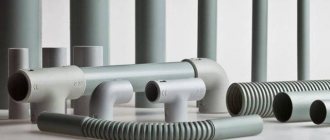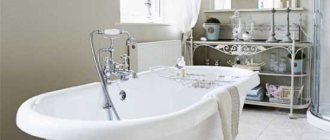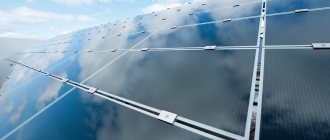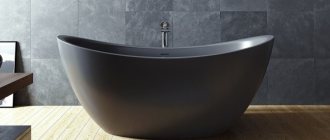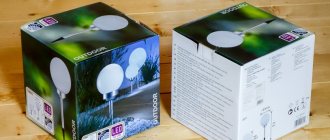With the development of modern technologies, solar energy is becoming a common and popular source of energy. Now solar power plants (SPP) are popular and recognizable all over the world. Most often we see black rectangles on the roofs of houses - this is a solar power plant, and we will look at how to make such a solar power plant with your own hands, the principles of its operation and installation features later in this article.
Diversity of SES
All existing types of solar power plants are divided into:
- disc-shaped;
- photo panels;
- tower;
- balloon;
- combined;
- parabolic cylindrical concentrator;
- solar vacuum power plants;
- tower type;
The last two options are solar thermal power plants. Concentrated solar energy is converted into steam, which turns a turbine that produces current.
Such a rich variety of SES types is clear evidence that this type of energy is in great demand.
Therefore, despite the pros and cons of solar power plants, large electric companies invest serious money in the construction of such installations.
Recommended reading: How a roof made of solar panels allows you to get the maximum amount of electricity.
Disadvantages of use
Among the shortcomings of the system, several points can be noted:
The main disadvantage of solar power plants
- Dependence on external circumstances. Operation stability is affected by night time, cloudy and rainy weather.
- Ensuring protection of photocells in case of bad weather.
- The need to use rechargeable solar panels capable of storing energy resources.
- Periodic maintenance of system equipment.
- High cost of the kit at the initial stage of installation.
- Having plenty of space to place the elements of the device.
- Insufficient power compared to oil, gas, coal, nuclear energy.
Therefore, manufacturers advise preferring a hybrid system with a phased conversion of solar fluxes.
About the advantages and disadvantages
Now that we have an understanding of what types of solar power plants exist, we can talk about what advantages they provide and what disadvantages they have. Solar power plants have pros and cons:
pros
- It is a renewable energy source.
- They work all over the globe.
- Safe for the environment.
- There are practically no moving components in the design, with the exception of those stations that automatically adjust according to the position of the sun.
- Long service life - from 25 years and above.
- Possibility of operation in the absence of centralized power distribution. For example, if you are planning to create a solar power plant for your dacha, this will not be any problem.
- It is possible to organize a hybrid power plant. For example, wind plus sun.
- In the regions of the Far North - an additional source of energy for the heating system.
Minuses
- Weather and time of day.
- The surface must be clean. Therefore, periodic cleaning is necessary.
- Large areas require ventilation or a forced cooling system.
- There is a residual impact on the ecosystem. Solar vacuum power plants are equipped with mirrors with precise focusing. If a bird falls into the focus of the mirrors, it dies instantly.
- The efficiency of solar panels is relatively low given their high cost.
- Additional equipment required.
And yet, despite the shortcomings of solar power plants, they are being built and are of great importance.
Pros and cons of solar power plants
The advantages of such stations include:
- Constant free power supply
- Possibility of increasing system power up to 30 kW
- The short payback period of the solar power plant (4-5 years) makes it very economically profitable
- Silence and absolute environmental safety
- SES do not require maintenance
- Long service life. Any solar power plant (SPP) operates for more than 25 years
- Developed service and warranty service for components
Among the shortcomings we note:
- The share of solar energy in total electricity generation is very small. The efficiency of, for example, nuclear energy is much higher than solar
- SES electricity production is affected by the weather: due to unfavorable conditions, production volume can be sharply reduced
- To generate sufficient electricity, large areas of solar panels are required
Despite the shortcomings, solar power plants are actively conquering the energy market. This is also facilitated by the reduction in the cost of equipment - until recently, the development of technology was hampered by high prices for solar power plants.
Home solar power plant
Now let's try to understand why we need a solar power plant for home use.
- First of all, it allows us to solve the problem with the supply of electricity.
- Solar panels provide an independent supply of electricity.
- They can serve as an addition to existing sources of electricity, such as a windmill or a gasoline (diesel) generator.
- It's a kind of investment. Electricity tariffs are constantly rising, but the sun is always shining.
- You can sell the remaining electricity to the state.
- For a private home, it partially covers traditional heating.
We advise you to read: we tell you in detail how to make solar panels with your own hands.
Advantages and disadvantages of a solar heating system
There are not many advantages of a solar heating system, but each of them becomes a reason for constant experimentation:
- environmental Safety. This is an environmentally friendly source that is safe for residents and the environment and does not require the use of standard types of fuel;
- autonomous work. The owners of such systems do not depend on the cost of energy resources and the economic situation in the country;
- economical consumption. By maintaining a standard heating system, you can reduce the cost of paying for hot water supply;
- availability. To install solar panels for heating your home, you don’t need to go to authorities and ask for permission.
How does a solar battery work?
The main element is a silicon-based semiconductor, which is capable of converting light energy into direct current electricity. This is the operating principle of all panels.
Consists of two layers of silicon:
- monocrystalline pure with p-type conductivity;
- contaminated n-type with an admixture of phosphorus.
The back side is protected by a metal layer.
On the reverse side there are terminals for the cable, for connecting to the inverter or battery, depending on the method of application (more on this later).
Installation of solar panels
The possibility of using solar energy was given to us by such science as solar energy. It is she who researches and develops devices that convert solar radiation into electrical and thermal energy.
Such devices include a solar battery. This is a flat, protectively coated structure made of photocells, which are semiconductors. They provide the process of converting solar energy into electrical energy. Due to the variety of sizes, they are used in various spheres of life.
For example, to provide electricity to a private home, you will need an installation that includes the following components:
- batteries;
- controller;
- inverter
With the help of an inverter, the direct current that is created on a clear day goes through the process of being converted into alternating current, and is then distributed to electricity consumers. Unconsumable electricity is stored in batteries and used at night or in bad weather. The controller monitors the battery charge.
Let's take a closer look at the pros and cons of solar panels.
The main thing is to choose the right one
For home use, you need exactly the solar power plant circuit that is suitable for a specific type of task, so if you have already decided to make it at home, then do not be lazy and read on.
There is no electricity in the area at all
It is possible to implement a good autonomous solar power plant scheme.
During the daytime, the modules accumulate electricity. You can simultaneously charge batteries and use electricity around the house. For everyday use, the circuit uses an inverter (converter) of direct current from batteries to alternating current for home appliances.
This option requires a charge controller. Then the whole system will work more efficiently. With its help, points of maximum power are tracked. In practice, this leads to the accumulation of energy in the batteries even in low light conditions.
This scheme also uses a diesel generator to recharge the batteries. Depends on how you assemble the circuit.
The centralized network is supplied intermittently
It is possible that your area has a centralized supply of electricity, but the capacity of local networks is not enough, and frequent long-term power outages occur. Then, if you need to have light at home, the task arises of assembling a solar power plant, you can use a hybrid solar power plant. It will complement the existing city network.
It repeats the principle of an autonomous ES, but it is complemented by a hybrid inverter configured to use solar energy. Such as the Hybrid and Dominator series MAPs. This installation is as independent as possible from the city power grid, since priority is given to the use of solar energy.
High electricity tariff
The main task of constructing such a scheme is to save central electricity.
As can be seen from the figure, batteries are excluded from the overall system. This operating principle quickly pays for itself by saving network power.
These are the basic schemes for using solar panels. All options for how a solar power plant works and with what solutions can be supplemented with other structural elements.
Complete set of solar power plants
Owners of suburban areas and houses are increasingly interested in alternative energy sources. They are attracted by the positive properties of the system and its payback. A home SES kit consists of several basic elements.
Solar panel with photovoltaic cells. It consists of semiconductor cells that generate energy.
Solar power plant and its equipment
The inverter's power supply - a rechargeable battery - allows you to accumulate and store electricity. It can be mono- or polycrystalline, used in individual construction.
The battery charge controller controls the charging and discharging process of the battery. Thanks to it, the solar panel works more efficiently in cloudy weather.
There are two types of inverter: mains and alternating current. The equipment distributes the load in the network, converts the direct current of the battery into alternating current with a frequency of 50 Hz.
To choose a specific model, you need to determine the DC voltage of the system.
How to calculate the number of solar panels
An autonomous solar power plant for a home begins with collecting information.
You need all the data on the number of sunny days in your area. Special weather reference books and the Internet will help with this. Calculate the total for the year and broken down by month. The guideline for selecting the power of a future solar station for a summer residence is the number of months with the most modest indicators.
Your total electricity needs, both annual and monthly, are now calculated. It must be taken into account that the main thing is not only to accumulate energy, but also to use it correctly. If the autonomous solar power plant has small needs, the number of panels will be correspondingly smaller. And this affects the final cost of a home solar power plant.
It must be remembered that the efficiency of the panels remains at the level of 12–14%. That is, if the solar efficiency for your region is 20 kWh/m², then only a 0.7 m² panel will output 1.68 kWh. Then everything is simple. If the electricity demand is approximately 80 kWh/month, you need 48 panels, on which the solar station will operate effectively.
How to connect
If the task is not to provide electricity to the entire house, then you can get by with a simple circuit. Solar panel + battery + charge controller connected by terminals. The battery stores electricity, and from it you can use it to charge your phone, adjust lighting, or connect devices that operate on constant 12 V. The method is primitive, but it works.
When there is a need to power home devices with a voltage of 220 V, a converter of direct 12 or 24 V, issued by the panel, into alternating 220 V is added to the circuit.
In practice, two types of connection are implemented:
- Consistent;
- Parallel.
A series connection produces a higher voltage.
If higher current is required, the panels are connected in parallel.
You can increase both current and voltage at once. To do this, some of the panels are connected in series, and the other part in parallel.
At the same time, both modes guarantee higher power. But if there is not enough power to operate the home electrical network, you need to add more panels.
Fixing elements according to a temporary scheme
If we consider the dacha option, when all the work is done only on weekends, a portable option is more convenient. The panels should be easy to disassemble so that you can hide them later or take them with you. This is where solar power plants have advantages and disadvantages over other solutions.
Fixation of panels according to a permanent pattern
If it is planned to use the roof of a building to place solar panels, then the floor material must be taken into account.
- Metal ceilings. Installation requires through drilling.
- Slate. Not recommended for installation due to the fragility of the coating.
- PVC or EPDM. Installation is carried out at the joints of sheets.
Installation features
There are certain installation rules that must be followed:
- Tilt angle. It is important that the panels are exposed to the falling rays of the sun for as much of the day as possible.
- Blackout. When the sun's path changes, adjacent panels should not create a shadow. To do this, it is important to maintain the required distance between elements.
Choosing a battery
Installation of a solar power plant starts correctly with the selection of a battery. Its normal operation depends on this.
Let's explain why in order:
- This is where the received solar energy goes.
- Also, the energy accumulated by it keeps the home electrical network in working order.
- Another function is to level out the uneven supply of energy from solar panels during overcast or strong winds.
Which ones to take?
It is fair to say that the battery is a weak point in the alternative supply of electricity to the home. Despite modern technologies, they have not become lighter, more compact or cheaper.
The SES system uses two types of batteries:
- Acidic;
- Gel.
They vary in price, internal structure and efficiency. It is preferable to choose gel, due to better tolerance of deep discharges. This is normal operation for him. These are the advantages of such batteries. The main disadvantage is low inrush currents at low outside temperatures. But in a home power plant, such currents are not needed. The downside of gel batteries is that they are more expensive than acid batteries.
How to calculate the cost
The power of the battery affects its cost. Let's calculate it. Here is an approximate table of electricity consumers in the house:
Now calculate the total ampere hours:
Thus, to provide 6 kW per day, batteries with a capacity of 1787 A/h are needed.
It turns out that to maintain power supply in the house, you need 8 batteries with a capacity of 200 A/h each.
Now the question price. If you take reliable batteries, such as Delta GX12-200, then the cost of one of these is $452.4. The total is 452.4×8 = $3619. For a region like Moscow, this will amount to 220,576 thousand rubles.
On the one hand, it’s not cheap, but the Delta GX12-200’s service life of 15 years justifies itself.

